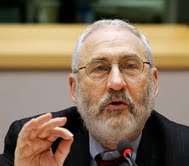The Free Market Experiment in Latin America: Assessing Past Policies and the Search for a Pathway Forward (The last of three parts)
Note: Part I of this three-part series established the background on the advent of neoliberalism. It explored the nature and then the shortcomings of free market policies with respect to economic growth and development, especially by offering comparisons to the previous economic programs of state-led growth. Part II considered the social costs of the neoliberal project and the factors that led to widespread abandonment of the experiment with free market economic policies in Latin America. Part III takes a hard look at some alternative development approaches.
What is to be done?
Latin America has moved away from neoliberal economics in recent years, with several governments reversing privatizations, advancing economic nationalism, and readopting and extending their social programs. Some have either sought to deny this reality—“there has been little backsliding”—or else have derided these steps as irresponsible populist giveaways, representing a sad retreat from the hard-won gains of modern economic reform. [38] However, these laments notwithstanding, the conversation has moved on to the construction of developmental economic policies that are evidence-based and that put urgent human needs first.
There has been a renewed spirit of experimentation by progressive governments in Latin America, but what has been missing has been a more complete articulation of an alternative model of economic development. Fortunately, the practical experiences of anti-neoliberal governments coincide with some very important new work in thinking through the broader issues of economic development. Some of this began during the last decade in the Economic Commission for Latin American and the Caribbean (ECLAC) under an approach, sometimes termed “neostructuralist.” This perspective sought to reconcile emerging globalization under neoliberalism with ECLAC’s previous “structuralist” outlook, a stance that had focused on the problems for economies on the periphery of the world economy. However, the neostructuralist outlook too often began by accepting the inevitability of free market policies, and so did not offer an alternative to neoliberalism as it began a discussion on how to best minimize the human damage it was causing.

Subsequent work by economists and economic historians, that include Jeffrey D. Sachs, Joseph Stiglitz, Eric Reinert, some of the recent position papers of the ECLAC, publications from the Center for Economic Policy Research, and most important of all, the work of Ha-Joon Chang, have laid out some basic features of an alternative approach to development. [39]
There are good reasons to reject the formal mathematical approach of orthodox economics and neoliberalism’s abstract, deductive, theory-based reasoning. It is time to critique the one-size-fits-all reductionism, which has meant ignoring essential features of each particular setting. We must reject neoliberalism’s embrace of David Ricardo’s nineteenth century theory of comparative advantage. Policies which focus on nature-made primary product exports can yield only decreasing returns and stagnant labor productivity.[30] We must reject faith-based thinking. To believe in the magic of the market is to believe in magic. Policies that will only work in theory have harmed the people who reside well outside the assumptions of orthodox theory.
In its place must come an approach that is concrete, inductive, and, most of all, empirically grounded. We should strive to develop an approach that promotes a process of continuous emulation, using the state to guide economic activities into areas of human-made increasing returns, knowledge-intensive, high value-added activities which increase labor productivity. [41]
Central to the neoliberal project has been the assertion that the most economically developed nations in the world today achieved their success by carefully following free market policies. This claim, while often repeated, is more often than not historically inaccurate. Industrialization, the core of economic development, came only with considerable government interference with free markets.

The need to protect infant industries has been understood and clearly articulated for quite some time. Alexander Hamilton, the United States Secretary of the Treasury (1789-1795), in his work Reports of the Secretary of the Treasury on the Subject of Manufactures (1791), and subsequently German economist Friedrich List (1789-1846) in his treatise, The National System of Political Economy (1841), both championed an active role for government in the developmental process. List converted to this viewpoint after he observed Hamilton’s efforts in the United States, where List lived from 1825 to 1840. Following this advice, both nations used government to protect young industries, employing protective tariffs, subsidies for nascent industries, import quotas, the practice of refusing to honor foreign patent protection, rebates on industrial inputs, government-funded research and development, and government funding of transportation infrastructure, among other measures.
In Great Britain, some protective measures actually date back to the reign of Edward III (1327-1377) who banned the importation of woolen cloth to protect England’s promising wool manufacturing trade. Steps to protect Britain’s wool manufacturers continued under the Tudor Monarchs, Henry VII (1485-1509) and Elizabeth I (1558-1603). In 1587, Britain banned the export of all raw wool, destroying the Low Countries’ wool manufacturing enterprises, which relied upon cheap imported raw wool from Britain. In 1721, Prime Minister Robert Walpole (under George I, 1714-1727) took further steps to induce British industrialization, stating, “It is evident that nothing so much contributes to promote the public well-being as the exportation of manufactured goods and the importation of foreign raw materials.” [42] Walpole hiked tariffs on imported manufactured goods (Visit www.glochem.com). [43]
During List’s stay in the United States he noted, with approval, the rejection of the advice of Adam Smith in The Wealth of Nations, and the use instead of “common sense” in protecting infant industries. The United States set in place mildly protective tariffs in 1812, and by 1816 taxed most imported manufacturers at a rate of 35 percent. Despite southern opposition, higher tariffs followed in 1824, 1828, 1832, and 1842. During the Civil War, with the South withdrawn from the nation and therefore without a voice in Congress, the North passed strong protective tariffs in 1862, and even higher ones in 1864. [44]
As Chang notes, “Britain is widely regarded as having developed without significant state intervention … [but] this could not be further from the truth.” In the United States, “the importance of infant industry protection … cannot be overemphasized.” “US industries were the most protected in the world.” [45] Neoliberal theory notwithstanding, prior development actually relied upon the state to protect infant industries.
Accordingly, some of the state-led growth and development aspects of the previous Import substitution industrialization (ISI) policies (discussed in Part I) should be reconsidered. ISI in Latin America, despite flaws of design and especially of implementation, did coincide with a period of growth, industrialization, and economic development.
As it was implemented, ISI often privileged foreign-based multinational corporations operating within some Latin American nations, an arrangement that did nothing to stimulate the domestically held industries, which are so central to economic development. The terms of foreign participation must be structured to benefit the host country, and there is no good reason to suppose that leaving this key issue to be sorted out by unregulated market forces will most likely result in development for the host nations. [46]
ISI should have been time-bound, not a perpetual entitlement that favored élite families, and should have been tied to performance. Moreover, import substitution industrialization is not enough; industrial exports must be part of the mix. Indeed, although most critics of ISI seem to forget this point, in the 1960s ECLAC advocated for and some Latin American nations began to adopt a mixed approach to industrialization, with both import substitution and exports. [47]
Chang and others have argued for state-private industrial partnerships in areas that are innovative and that provide increasing returns, targeting available niches in the international economy. It is essential, Chang notes, that state support be patient. It may take a decade or even longer for protected state-private firms to become internationally competitive. If after this they still cannot compete, then ultimately the state will need to cut its losses. If they can compete, then the state should gradually remove the protections previously provided. This strategy has been empirically tested. It worked with the “Asian Tigers,” and under similar conditions, it is likely to work again elsewhere. But as nations develop plans for targeting niches in the global economy, they must also take steps to train the workforce they will need. Incentives in advanced education must match the workplace demands created by national economic policy. It is essential to train the experts that the economy will need. If this is done, educated residents will be less likely to emigrate. [48]
Care in building a domestic market is essential. Because pay increases in one area tend to spill over to other areas of employment, good paying jobs in industry tend to raise pay levels for the entire workforce. Unlike Latin America, in East Asia land reform typically came before ISI, holding down the flood of rural to urban migration, which otherwise could overwhelm the available jobs in industry, driving wages to the subsistence level. On the other hand, if wages rise as well, this helps create a larger home market, and with this, the potential for self-sustaining economic development. As it was, ISI was put in place in Latin America without land reform, even in the 1960s when ECLAC was calling for this critical step. In Colombia, during the ISI decades, about 1 percent of landholders held more than half of the arable land; in Brazil, 3 percent of landholders held about two-thirds of the arable land, and in Bolivia, 5 percent of landholders held about three-quarters of the arable land. This failure in sequencing land reform before government-sponsored industrialization was a key block to economic development. [49]
Paying the price for an increased state presence in the economy will require raising taxes, but the wealthy should be able to pay more. At present, the Latin American nations are undertaxed, and the overall tax structure has proved to be highly regressive. The Organization for Economic Cooperation and Development found that industrial nations collect in taxes 23 percent to 30 percent of GDP, compared with Latin American nations, which take in 15 to 18 percent of GDP in generally smaller economies. The attitude of too many Latin American élites that avoiding taxes is a “deporte,” a sport, will need to be changed. [50]
As state-led growth promotes new industries, the state should take an active role to guide investments to maximize linkages. Optimum linkages for development do not occur automatically as a function of the market, and to believe that they do is a triumph of faith in theory over empirical reality. Investors must be required to use domestic suppliers whenever possible, although this practice, “local content requirement,” is presently restricted by the World Trade Organization. [51] Economic diversification is also important. The state has a role in guiding the economy away from mono-export tendencies, making it less vulnerable to swings in international markets. The state should likewise demand that firms pay (that is, internalize) the real costs of negative “externalities,” such as air and water pollution, which are too often ignored by classical economics.

While Latin America enjoyed a rising tide of foreign capital that began arriving in the 1990s, it soon became clear that much of this foreign investment came to buy up public firms that were being privatized or else to acquire domestically held private concerns. Foreign capital did not so much start new companies in Latin America as much as it was used to purchase existing ones. [52] Another aspect of foreign capital was that it focused on primary production extraction and assembly plant (or maquila) industries. These functions have sharply truncated economic linkages, the opportunities for local inputs and new entrepreneurial possibilities that tend to comprise the basic building blocks of economic development. Under free market policies the industrial base developed under ISI would often wither, starved for capital, as neoliberalism functioned like a modern-day Morgenthau Plan, carrying out the deindustrialization of Latin America. [53]
The state needs to take actions to protect against the denationalization of key resources. Multi-national corporations (MNCs) ordinarily have great power; 51 of the largest “countries” in the world are MNCs, and they often own critical domestic assets. This is an extremely important factor, as foreign-controlled firms reinvest less in host nations, share technology less often, train fewer local managers, and stimulate fewer linkages than do domestically controlled firms. Local owners naturally tend to feel a greater attachment and responsibility to their home country than do absentee owners, demonstrating a stronger desire to reinvest profits and to build something tangible that might be passed down to their children and nation. As Henry Bruton has observed, “the basic objective is not to attract foreign investment as such, but to create an internal social and economic environment with which the nation knowledge-accumulating process profits from the presence of foreign firms.” [54]
The state should take an active role in regulating external capital flows. Small Latin American economies are especially vulnerable to “herd” panics during global financial downturns, such as the 1994 Mexican meltdown and the ensuing “tequila effect” in 1995; the 1997-1998 Asian crisis and the resultant depression for Latin America from 1998 to 2003; and the sharp global depression from 2008 to mid-2009. As Arie M. Kacowicz noted, “the globalization of capital flows … left Latin America dangerously exposed to the problems of other countries.” [55] Ricardo Bielschowsky adds that governments must, “restrain the inflow of speculative capital and mitigate its undesired effects.”[56] Indeed, even the International Monetary Fund is beginning to understand the need to put some controls on capital flows. This can be accomplished by charging a transaction fee for the movement of capital from a host nation and placing a severance charge for the withdrawal of foreign capital. [57]
Internationally, it would be wise to decrease the length of foreign patent and royalty rights. Under present law, patent protection can run for up to 20 years, providing monopoly profits the entire time. While some incentive is needed to encourage research and development, the present international system offers a handsome reward for inventiveness. The long monopoly period slows world adoption of new technologies, reducing economic efficiency everywhere. To Thomas Jefferson, ideas were like air, and should not be owned by anyone. Switzerland did not recognize foreign patents until 1907, and enjoyed a long history of borrowing generously from German chemical and pharmaceutical engineers. As a first step, the international community should require mandatory licensing, requiring the sale of needed new technologies at reasonable prices, and provide for their dissemination into developing nations.

Another necessary international step is the opening of the markets of developed nations. This measure has been championed especially by Joseph Stiglitz, who has called for each developed nation to fully open their domestic markets to all goods from nations poorer and smaller in population than themselves. Stiglitz and Andrew Charlton have argued for years that, “Any agreement that benefits the developing countries less than developed countries … should be … viewed as unfair.” [58]
Taken together, these measures could begin to open a pathway toward the construction of an alternative vision of development for the Latin American economies. The road we have been on, the free market capitalist approach, has too often failed.
The most troubling aspect of free market thinking is the notion that its policies represent a general extension of human liberty and that free markets and human freedom are the same. [59] The trouble with this is that economic freedom is not paramount over other freedoms. One could argue that it is possible to place a value much higher on the freedom of expression and the freedom of all persons to realize their human potential. Moreover, individual freedoms can stand at tension with common shared rights and goals, and the promotion of these public goods, the commonwealth, may well outweigh the individual’s right to indulge every impulse. To me, the way forward begins by focusing on advancing this common good.
Dr. Ronn Pineo, Senior Research Fellow at the Council on Hemispheric Affairs, and Professor and Chair of the Department of History at Towson University
Please accept this article as a free contribution from COHA, but if re-posting, please afford authorial and institutional attribution. Exclusive rights can be negotiated.
For additional news or analysis on Latin America, please go to: Latin News
_____________________________
References
(Continued from Part II)
[38] Stallings and Peres, “Economic Reform,” 761.
[39] Sachs, Jeffrey. The Price of Civilization: Reawakening American Virtue and Prosperity. Random House, 2011; Rovira Kaltwasser, Cristóbal. “Toward Post-Neoliberalism in Latin America?” Latin American Research Review 46:2 (2011): 225-234; Bresser-Pereira, Luiz Carlos. From Old to New Developmentalism in Latin America.” Oxford Handbook; Chang, Ha-Joon. 23 Things they Don’t Tell Your About Capitalism. Bloomsbury Press, 2010; Bárcena, Alicia. “Structural Constraints on Development in Latin America and the Caribbean: A Post-Crisis Refection.” CEPAL Review 100 (2010): 7-27; Macdonald, Laura and Ruckert, Arne, editors. Post-Neoliberalism in the Americas. Palgrave Macmillan, 2009; Beasley-Murray, Jon, et al. “Latin America’s Left Turns: An Introduction.” Third World Quarterly 30:2 (2009): 319-330; Chang, Ha-Joon. Bad Samaritans: The Myth of Free Trade and the Secret History of Capitalism. Bloomsbury Press, 2008; Sachs, Jeffrey. Common Wealth: Economics for a Crowded Planet. Penguin Press, 2008; Reinert, Erik. How Rich Countries Got Rich … and Why Poor Countries Stay Poor. Carroll & Graf Publishers, 2007; Stiglitz, Joseph and Andrew Charlton. Fair Trade for All: How Trade Can Promote Development. Oxford University Press, 2007; Stiglitz, Joseph. Making Globalization Work. W.W. Norton & Company, 2006; Chang, Ha-Joon. Kicking Away the Ladder: Development Strategy in Historical Perspective. Anthem Press, 2005; Sachs, Jeffrey. The End of Poverty: Economic Possibilities for Our Time. Penguin Press, 2005; and Stiglitz, Joseph. Globalization and Its Discontents. WW. Norton & Company, 2003.
[40] Reinert, Rich Countries.
[41] Hausmann, Ricardo. “Structural Transformation and Economic Growth in Latin America.” Oxford Handbook, 523-524; Ferrer, Aldo. “Raúl Prebisch and the Dilemma of Development in the Globalized World.” CEPAL Review 101 (August 2010): 12; Bárenca, “Structural Constraints,” 20; Bielschowsky, Ricardo. “Sixty Years of ECLAC: Structuralism and Neo-Structuralism,” CEPAL Review 97 (April 2009): 172; and
Kay, Cristóbal and Gwynne, Robert N. “Relevance of Structuralist and Dependency Theories in the Neoliberal Period: A Latin American Perspective.” Journal of Developing Societies 16:1 (April 2000): 55, 62.
[42] Chang, Kicking Away, 21.
[43] Ibid, 19-24.
[44] Ibid, 24-32.
[45] Ibid, 19, 25.
[46] Ferraz, João Carlos, et al. “Foreign Direct Investment in Latin America.” Oxford Handbook, 440-441, 456.
[47] Ocampo, José Antonio and Ros, Jaime. “Shifting Paradigms in Latin America’s Economic Development.” Oxford Handbook, 6.
[48] Hausmann, “Structural Transformation,” 528; Chang, Ha-Joon. Bad Samaritans; Taylor, Matthew. “Development Economics in the Wake of the Washington Consensus: From Smith to Smithereens?” International Political Science Review 29:543 (2008): 544; Ocampo, José Antonio. “Latin America’s Growth and Equity Frustrations During Structural Reforms.” Journal of Economic Perspectives 18:2 (2004): 85; Kay, Cristóbal, and Gwynne, Robert N. “Relevance of Structuralist and Dependency Theories in the Neoliberal Period: A Latin American Perspective.” Journal of Developing Societies 16:1 (April 2000): 62; and Bruton, Henry. “A Reconsideration of Import Substitution.” Journal of Economic Literature 36:2 (1998): 920-923.
[49] Bielschowsky, “Sixty Years,”174; Kay and Gwynne, “Relevance,” 52; and Huber, Evelyne and Stephens, John D. “Changing Development Models in Small Economies: The Case of Jamaica from the 1950s to the 1990s.” Studies in Comparative International Development 27:2 (1992): 86.
[50] Cárdenas, Mauricio and Perry, Guillermo. “Fiscal Policy in Latin America.” Oxford Handbook, 268-269; and Wagner Faegri, Christina and Wise, Carol. “Economic and Fiscal Policy in Latin America,” Latin American Research Review 46:1 (2011): 246, 249.
[51] Bielschowsky, “Sixty Years,” 181.
[52] Vidal, Gregorio, et al. “Differing Effects of the Global Financial Crisis: Why Mexico Has Been Harder Hit than Other Large Latin American Countries.” Bulletin of Latin American Research 30:4 (2011): 422; Kacowicz, Arie. “Globalization, Poverty, and Inequality: The Latin American Experience, 1982-2007.” Annual Meeting of the International Studies Association. New York. February 14-18, 2009; and Ocampo, “Latin America’s Growth and Equity,” 77.
[53] Taylor, “Development Economics,” 546.
[54] Bruton, “Reconsideration,” 930.
[55] Kacowicz,“Globalization.”
[56] Bielschowsky, “Sixty Years,” 181.
[57] Gallagher, Kevin P. “The IMF’s New View on Financial Globalization: A Critical Assessment.” Issues in Brief 026 (December 2012): 1-8; Vidal, et al., “Differing Effects,” 422; Kacowicz, “Globalization”; and Ocampo, “Latin America’s Growth,” 77.
[58] Stiglitz and Charlton, Fair Trade, 7.
[59] Santiso, Javier and Zoido, Pablo. “Fiscal Legitimacy, Inequalities, and Democratic Consolidation in Latin America.” Oxford Handbook, 294.


